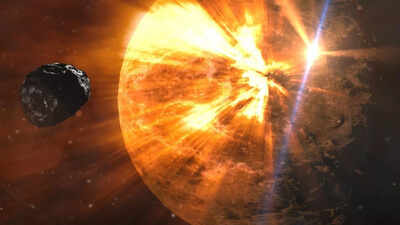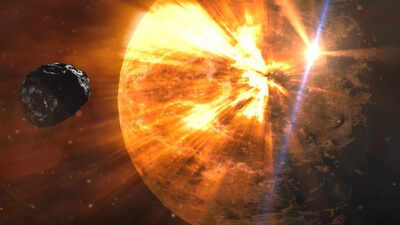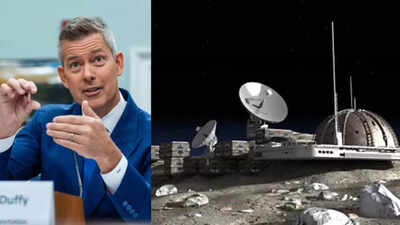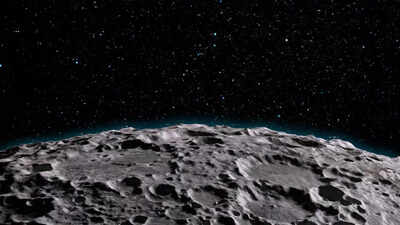Earth is frequently visited by objects from deep space, ranging from tiny meteorites to massive asteroids that capture global attention. One such celestial traveler, asteroid 2025 OT7, is now at the center of interest as it prepares for a close approach to Earth on August 5, 2025. Its remarkable size, high velocity, and unique orbital path have made it a key subject for astronomers and sky watchers worldwide. Events like these emphasise the importance of continuously tracking near-Earth objects (NEOs) to understand their behaviour better, refine monitoring technology, and strengthen planetary defense strategies. The upcoming flyby of asteroid 2025 OT7 serves as a reminder of how dynamic our solar system truly is and why vigilance in space observation is essential.
NASA tracks 170 feet asteroid 2025 OT7 to close flyby on August 5: Speed and distance
Asteroid 2025 OT7 is estimated to be about 170 feet (52 meters) wide, roughly comparable to the height of a 16-story building. It is traveling at an impressive speed of 48,431 miles per hour (77,955 km/h), covering vast distances in space within seconds. During its closest approach, the asteroid will pass at a distance of 2.7 million miles (4.3 million kilometers) from Earth.Although this may seem like an extremely safe distance, astronomers categorise such flybys as relatively close because OT7 belongs to the Aten group of asteroids, which often cross Earth’s orbital path. These types of asteroids are constantly monitored due to their dynamic orbits and potential to shift over time.NASA has strict criteria for classifying an asteroid as a Potentially Hazardous Asteroid (PHA). For an object to fall under this category, it must have a diameter of more than 85 meters (279 feet) and pass within 7.4 million kilometers (4.6 million miles) of Earth. While asteroid 2025 OT7 is passing within the monitoring zone, it does not meet the size threshold. This means there is no immediate danger and its orbit is well understood, with no risk of collision during this flyby.
Importance of monitoring space rocks
Even when an asteroid does not pose a direct threat, it remains crucial to track and study its movement. Small gravitational shifts or interactions with other celestial bodies could potentially alter an asteroid’s trajectory over time. That is why space agencies like NASA, ESA, JAXA, and ISRO keep a constant watch on near-Earth objects like 2025 OT7.India, under the guidance of ISRO Chairman S. Somanath, has shown keen interest in asteroid research and exploration. Plans are already in motion to study larger asteroids such as Apophis, which will pass extremely close to Earth in 2029. ISRO also aims to collaborate internationally on future asteroid landing missions, further enhancing planetary defense efforts.
What makes asteroid 2025 OT7 significant
The flyby of asteroid 2025 OT7 is significant, not because of danger, but because it serves as a reminder of the constant activity within our solar system. Close approaches like this demonstrate Earth’s vulnerability to celestial events and reinforce why global monitoring systems are so important. They also present opportunities to test and refine advanced tracking technologies and engage the public in space science.For astronomers and researchers, this flyby offers valuable observational data that can be used to improve our understanding of asteroid compositions, movements, and long-term trajectories. For the general public, it sparks interest in space exploration and emphasizes the need for planetary defense strategies.
Planetary defense progress with NASA DART and global missions
In recent years, planetary defense has moved from science fiction to reality. NASA’s DART mission, which successfully altered the orbit of asteroid Dimorphos in 2022, proved that humans have the capability to influence the path of small celestial bodies. This breakthrough has inspired similar efforts worldwide. The European Space Agency (ESA) is preparing its Hera mission to further study the effects of DART’s impact, while ISRO and other agencies are exploring their own asteroid observation and mitigation programs. Together, these efforts create a global network designed to ensure early detection and potential deflection of hazardous space objects.Also Read | NASA astronaut recalls awe-inspiring view of Mumbai and Delhi’s night lights from space: ‘India looks magical’






